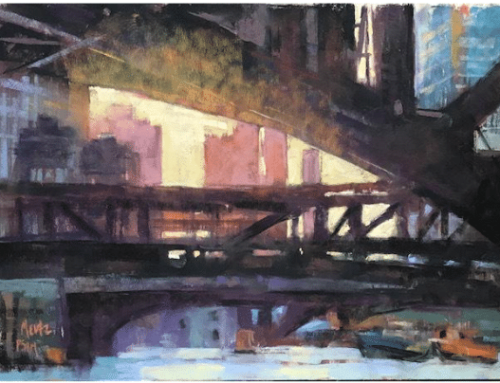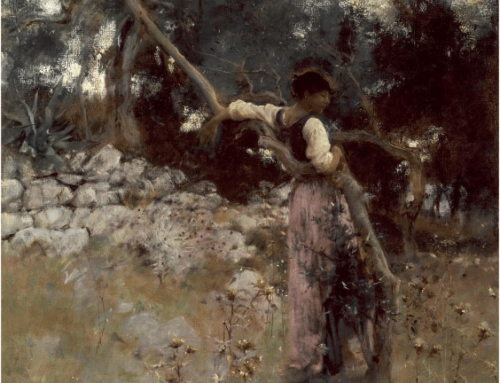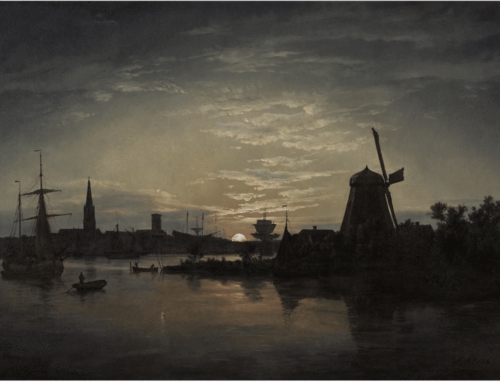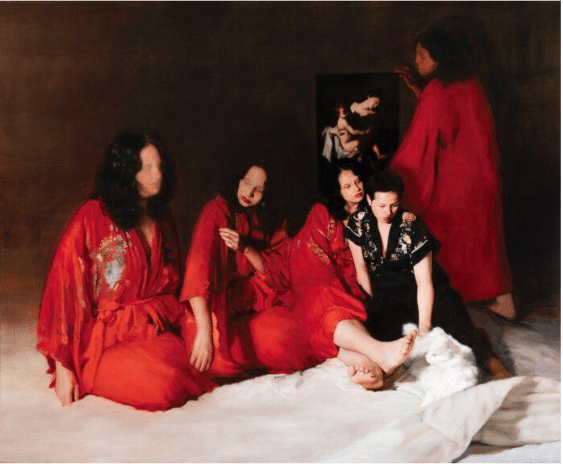
Ofelia Andrades (b. 1982), “Alegoria VI,” 2020, oil on linen, 55 x 67 in., available through the artist
There is a lot of superb contemporary realism being made these days; this article by Allison Malafronte shines light on a gifted individual.
Ofelia Andrades (b. 1982) is a Chilean artist who is slowly gaining recognition throughout the field of contemporary realism. Her large, complex compositions are painted with classical precision and technique, and often employ chiaroscuro effects for increased drama. Velázquez, Caravaggio, and Rembrandt are the types of masters who have clearly been an influence on this painter’s approach.
Andrades’s inclination toward art was evident from childhood. She attended workshops from an early age, learning various approaches to both drawing and painting. Her formal training began at the Experimental Art School, where she earned a technical degree in painting and graphic design. Next, she attended the University of Chile, where she completed a Bachelor’s degree in visual arts. A two-year stay in London found Andrades refining her skills and expanding her education further, and when she returned to Chile in 2014, she continued painting and teaching there.
Andrades pursues allegory and symbolism in her multi-figure compositions, often communicating messages with psychological and philosophical overtones.
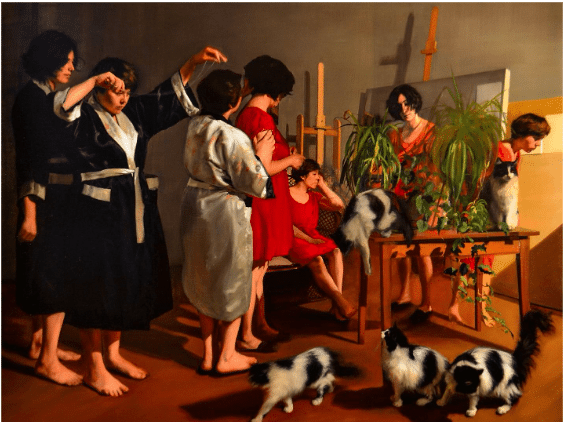
Ofelia Andrades , Allegorias II, Variacion. 140 x 170 cm. oil on linen 2016.
“The world of representation has always been fascinating to me,” she says. “Oftentimes I imagine what it’s like to be inside the painting, to become one with the painting. Therefore, I am usually in the composition as one of the subjects; it’s generally autobiographical.”
“I especially like to explore the world of symbolism around the feminine, as well as the psyche itself, the stages of life, and the drama of light and shadow in the psychological process. I like scenes that are suggestive and open, with an atmosphere charged with reverie, where reality and fiction are mixed and limits are lost. ‘Alegoria VI’ (top of page) is one such painting.”
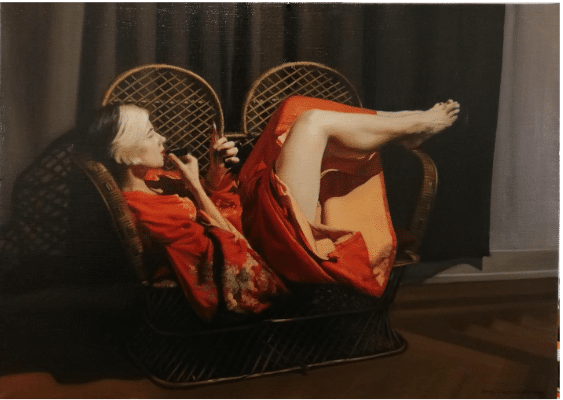
Ofelia Andrades, Francisca. Oil on linen, 2022
Andrades has exhibited throughout the world, including major museums and galleries, and has received several awards. Her paintings are in private and public collections, and she currently works in both Santiago (Chile) and Mexico City.
Connect with the artist at ofeliaandrades.com.
This article was originally published in Fine Art Connoisseur magazine (subscribe here).<< https://fineartconnoisseur.com
If painting the figure is for you, check out a wealth of instructional videos by pros at the top of the field right here.
All Aboard: The Railroad in American Art, 1840–1955, Making a Stop Near You
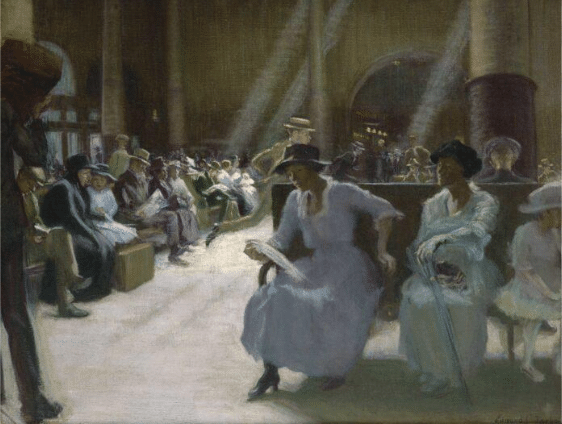
Edmund C. Tarbell (1862–1938), “In the Station Waiting Room, Boston,” c. 1915, oil on canvas, 24 3/8 x 32 in., Crocker Art Museum, Sacramento, gift of Dr. Joseph R. Fazzano. 1956.7
The title says it all. “All Aboard: The Railroad in American Art, 1840–1955” is the touring exhibition premiering this summer at Vermont’s Shelburne Museum, an institution that has long celebrated various modes of transportation. On view are more than 50 works by major artists who witnessed the railroad’s expansion and impact for themselves. The exhibition is on view June 21–October 13, 2024.
Starting with train’s emergence as a technological marvel, the project traces the anxiety felt by such Hudson River School masters as Thomas Cole and George Inness about the railroad’s profound impact on nature. Yet colleagues such as Albert Bierstadt were enthralled by the Western landscapes that trains made it easier to reach, while early 20th-century talents such as Edward Hopper, Reginald Marsh, George Bellows, John Sloan, and Jacob Lawrence relished the constant movement of freight and people.
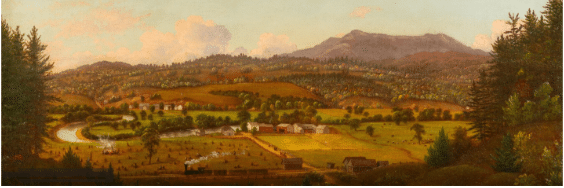
Charles Louis Heyde, Steam Train in North Williston, Vermont, ca. 1856. Oil on canvas, 209/16 x 353/16 in. Collection of Shelburne Museum, gift of Edith Hopkins Walker. 1959-49.1. Photography by Andy Duback.
Ben Shahn, Thomas Hart Benton, and others portrayed railroad workers as modern-day heroes, while contemporaries like Georgia O’Keeffe, John Marin, and Joseph Stella stripped the machine forms down to highlight their power. It’s not all roses: the show also explores how railroads damaged Native cultures and contributed to wealth inequality nationwide.
“All Aboard” has been organized by Shelburne in partnership with the Dixon Gallery and Gardens (Memphis) and Joslyn Art Museum (Omaha), where it will appear later. Future locations may be announced as they are listed.

